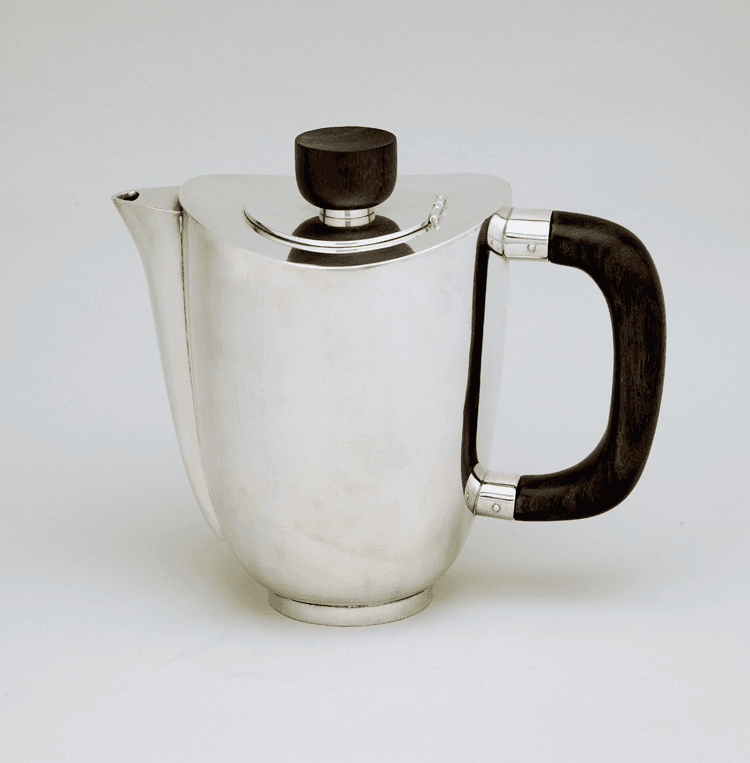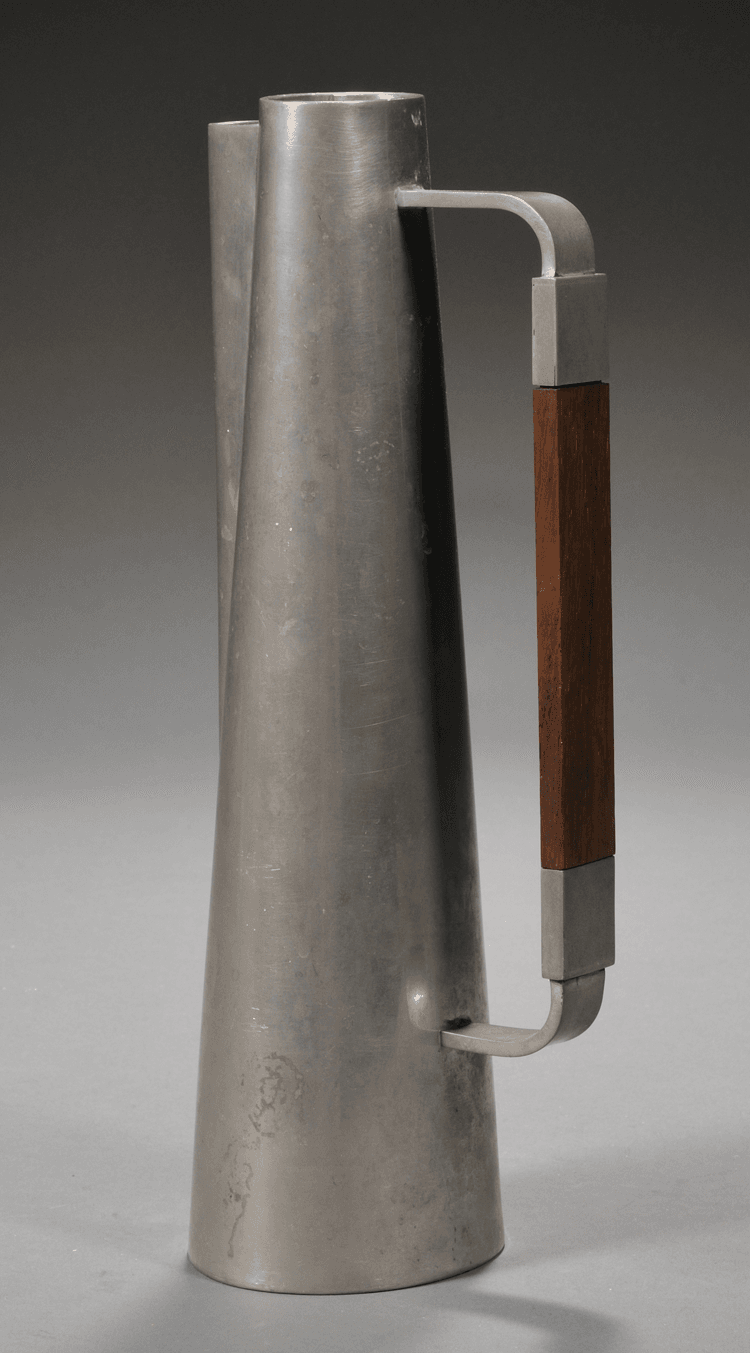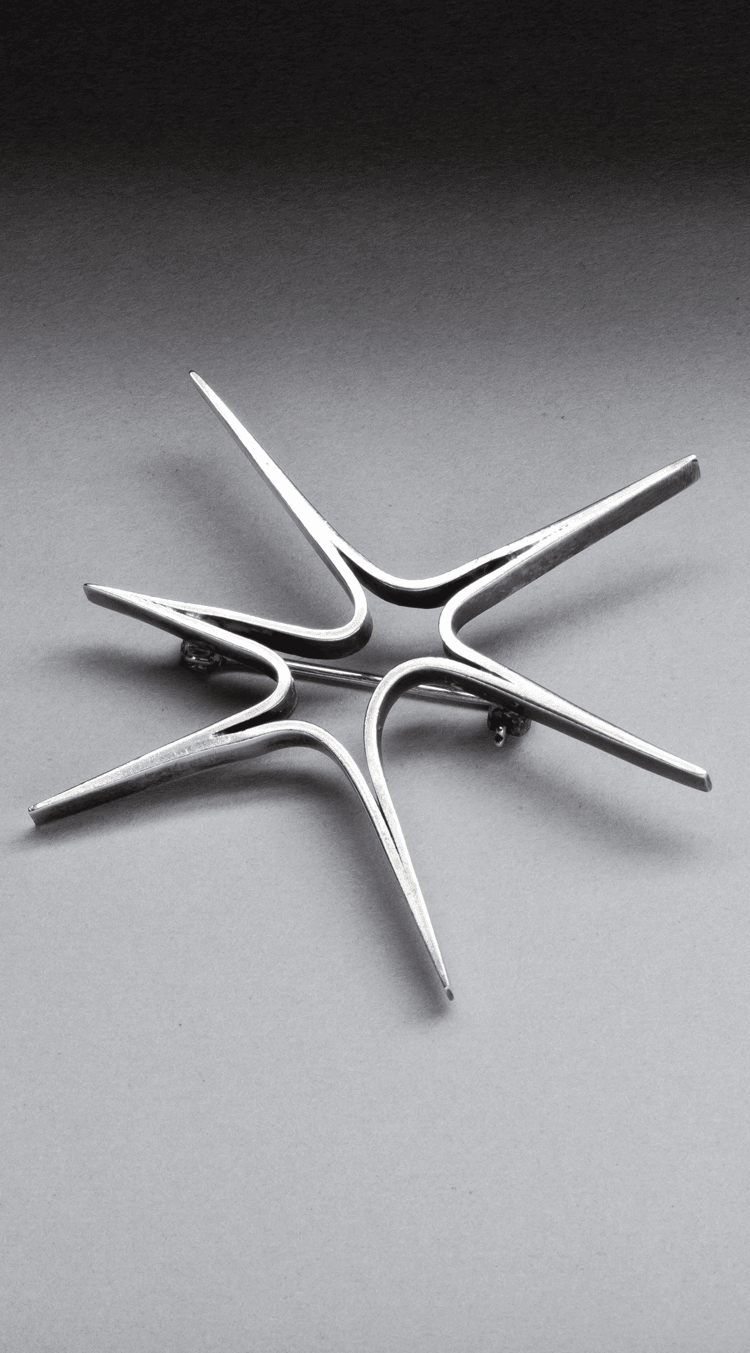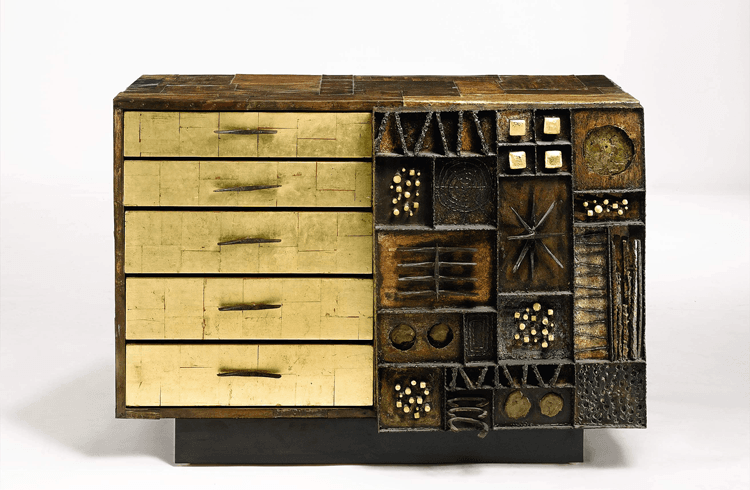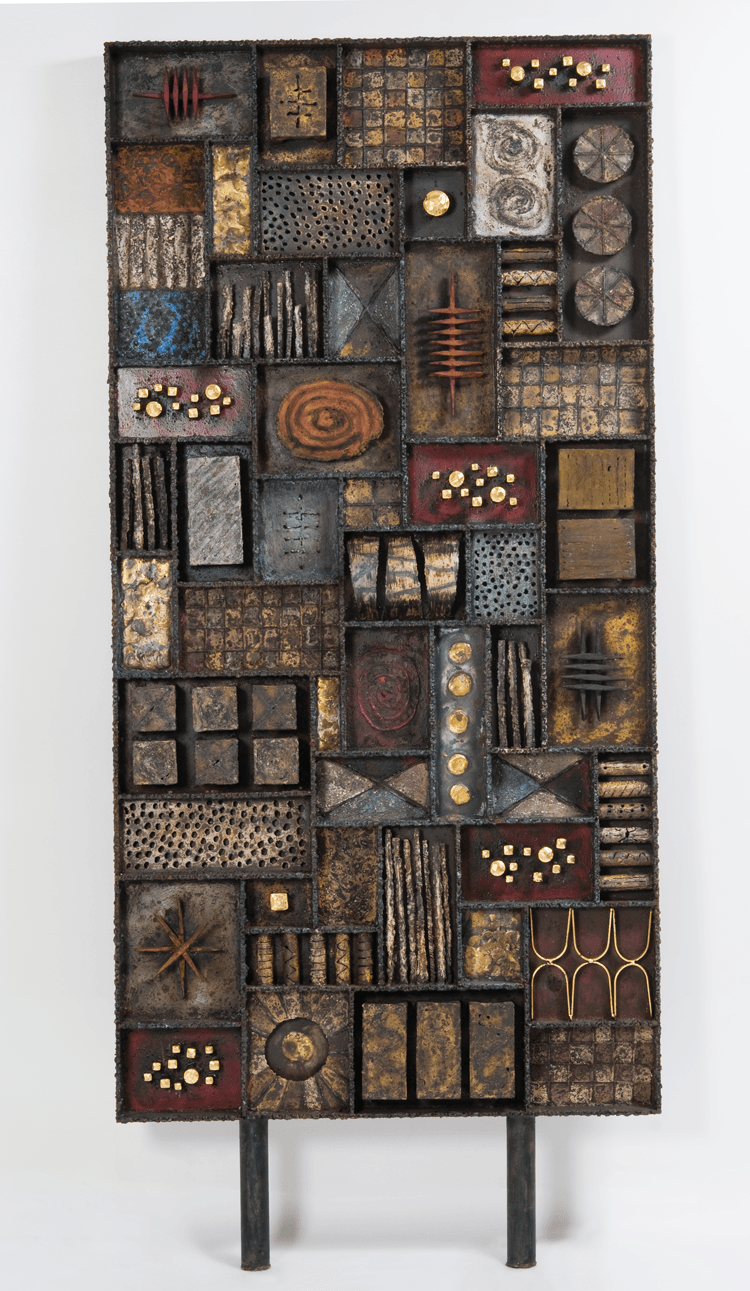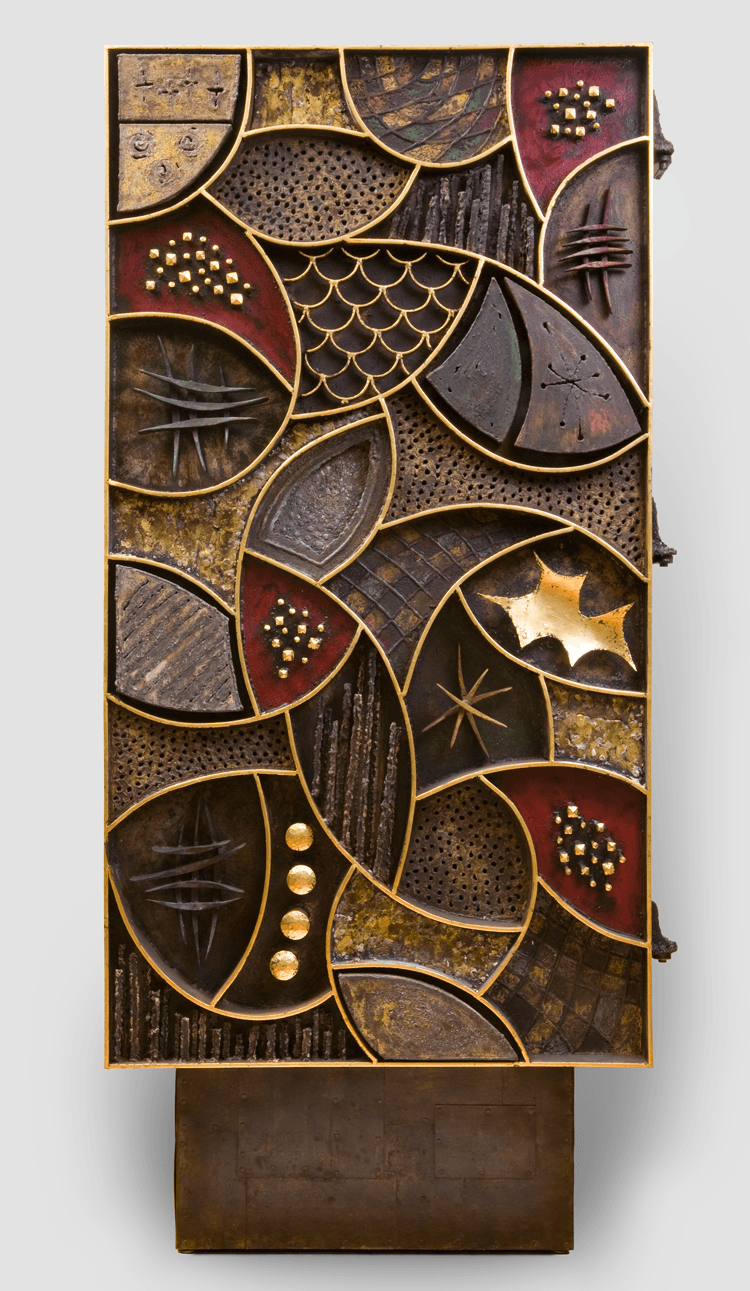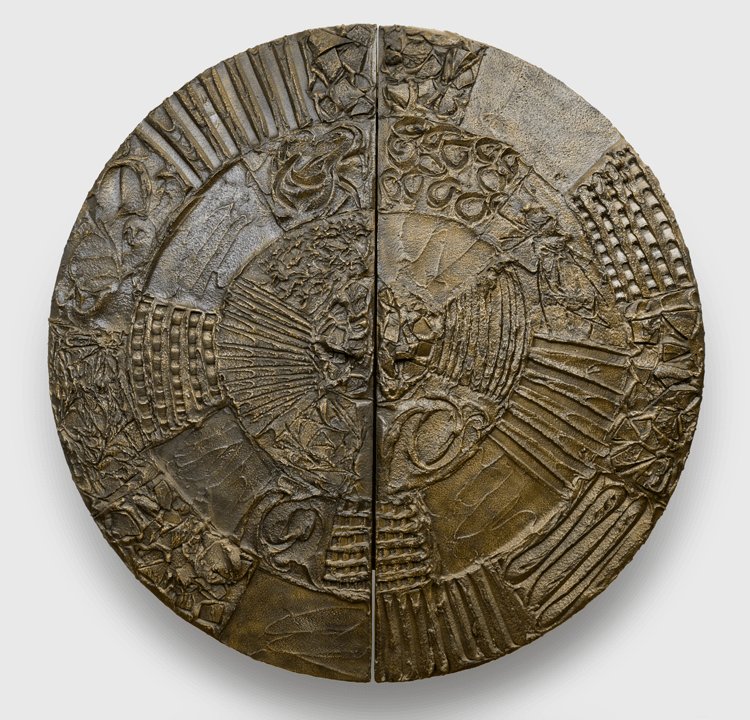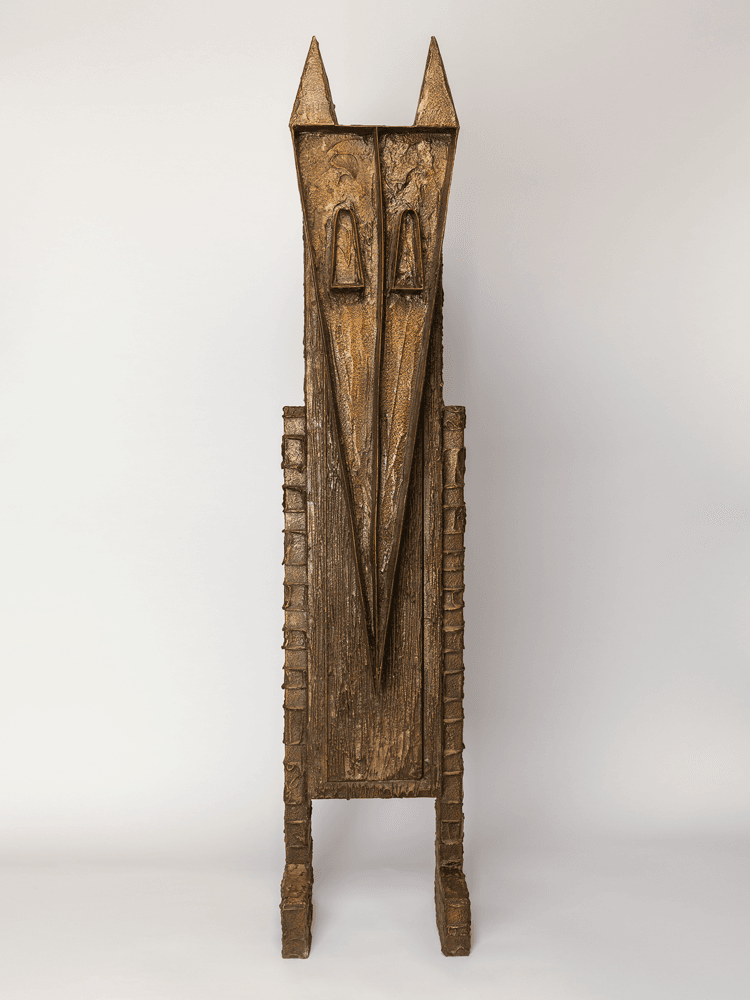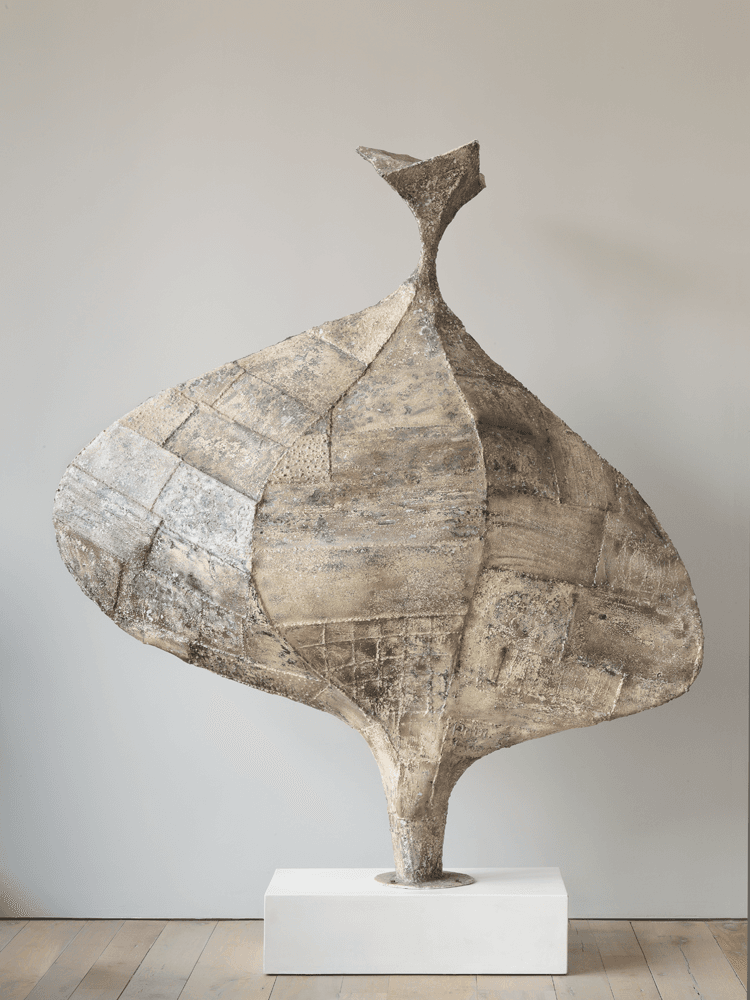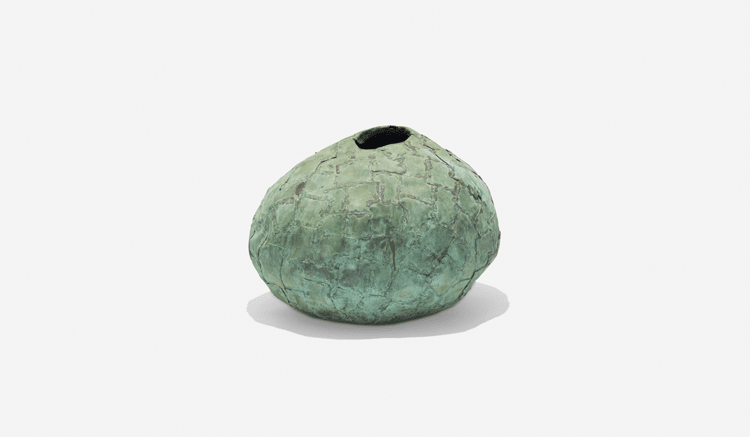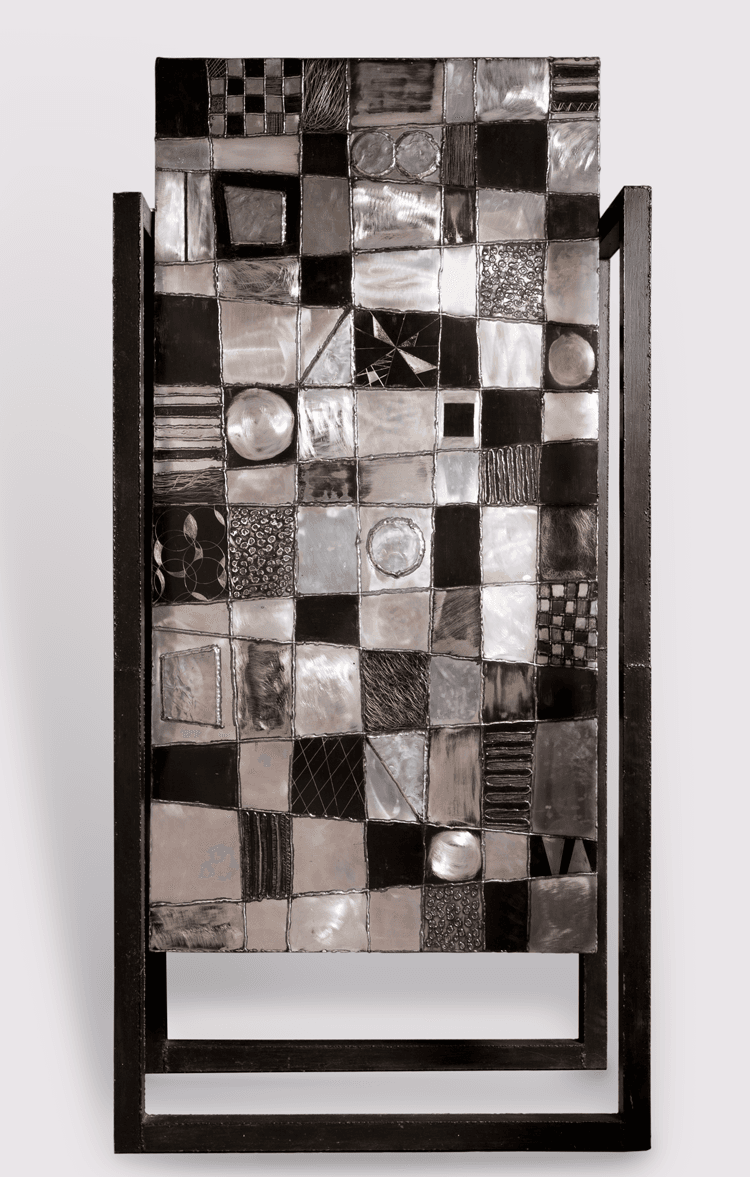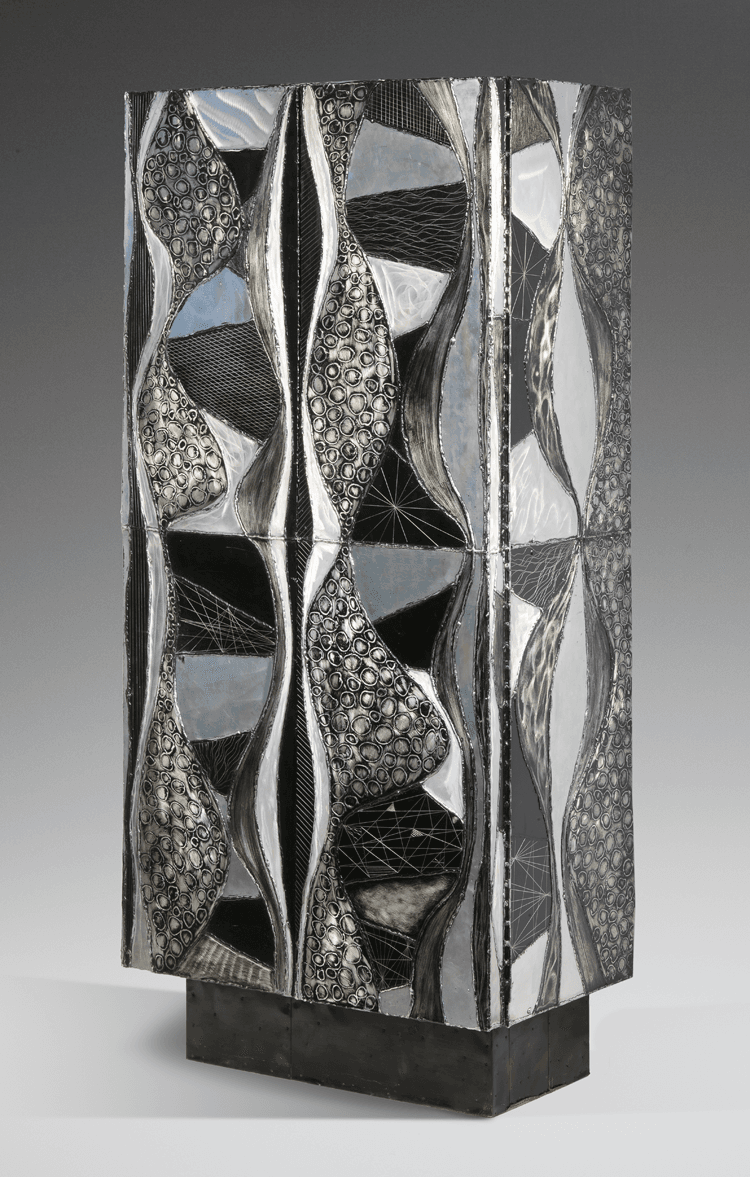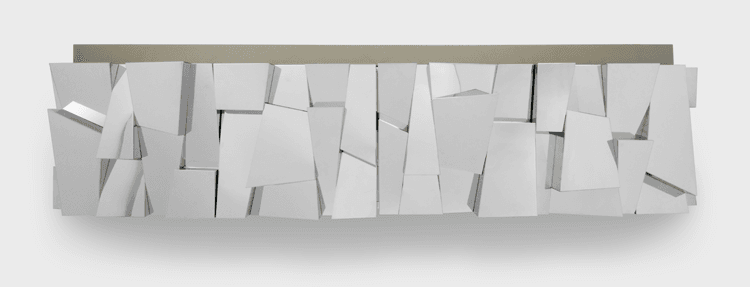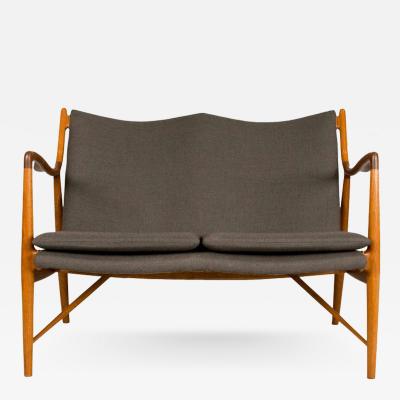Paul Evans: Crossing Boundaries and Crafting Modernism
What: Paul Evans: Crossing Boundaries & Crafting Modernism
Where: James A. Michener Art Museum, 138 South Pine Street, Doylestown, Pennsylvania
When: March 1–June 1, 2014
Contact: 215.340.9800; www.michenermuseum.org
Where: Cranbrook Art Museum, Woodward Avenue, Bloomfield Hills, Michigan.
When: June 21–October 12, 2014
Contact: 248.645.3320; www.cranbrookart.edu
Conceptualizing furniture as sculpture and abstract composition, designer-craftsman Paul Evans (1931–1987) established a reputation as an imaginative designer of unique sculpted metal furniture. Throughout his career, he constantly experimented with new materials, technologies, and designs. His highly innovative experimental approaches to metal have attracted an international following, especially in the past decade.
The exhibition Paul Evans: Crossing Boundaries & Crafting Modernism, is the first retrospective of Evans’ work and documents the artist’s dynamic career, evolving from metalsmith to furniture maker to designer. The show includes more than sixty works by Evans along with a selection of studio craft work by his contemporaries.
Museum visitors will be able to experience the evolution of Evans’ early work from his student years as a metalsmith at Rochester Institute of Technology's School for American Craftsmen (SAC) to the collaborative period with fellow craftsman Phillip Lloyd Powell (1919–2008) when he transitioned from metalsmith to studio furniture maker.
In 1951 Evans enrolled at SAC, where his instructors included American silversmiths and designers John (Jack) Prip and Lawrence Copeland, both of whom were greatly influenced by contemporary Scandinavian design. At SAC Evans created a silver coffee service with ebony handles. The coffeepot from that service (Fig.1) won first prize in the metals section of the Young Americans exhibition, organized by the American Craftsmen’s Educational Council in 1952 and held in Manhattan at America House, one of the earliest midcentury retail shops to specialize in American crafts of all media.
|
After studying at SAC and Cranbrook Academy of Art, Evans assumed a position in the metal shop at Old Sturbridge Village, where he worked as a full-time craftsman, selling his work to the public. While at Sturbridge, he produced work based on traditional classical American colonial design as well as sleek, streamlined forms inspired by contemporary Scandinavian design (Fig. 2). Jewelry surviving from Evans' work at Sturbridge includes a silver pin (Fig. 3) crafted in a starburst form that Evans would later use as a high-relief ornamental element on his Forged-Front cabinets.
In 1955 Evans left Sturbridge to share a showroom with woodworker Phillip Lloyd Powell in New Hope, Pennsylvania. The two shared showrooms and collaborated on works for over a decade. An example of their collaborative work is a chest (Fig. 4) that includes gilded drawers and handles by Powell and an Evans sculpted steel panel surface with high-relief hand-forged decorative elements set in a grid-like arrangement.
The late fifties and sixties were an incredibly creative period for Evans and his growing corps of shop workers. It was a period in which he produced some of his finest studio furniture. In 1961 Evans and Powell were invited to exhibit their work in Manhattan at America House. One section of the Michener retrospective includes a re-creation of that 1961 exhibition, highlighting works quite similar to the works in the original display. It was in the America House show that Evans debuted his Forged-Front screens (Fig. 5). Throughout the sixties and into the seventies, Evans crafted unique Forged-Front screens, sideboards (Figs. 6, 7), collages, and tables with high-relief hand-forged decorative elements. Heavy oil pigments were treated with heat and acids to create crusty-textured, multicolored surfaces with diverse color and patina variations.
In 1964, Evans joined forces with Directional Furniture, an association that significantly altered the nature and scope of his furniture production over the next fifteen years when in many ways he followed more of a design than craft paradigm. The Directional showrooms, located in major urban areas, offered Evans opportunities for marketing and selling his work throughout the United States even as the business demanded that he continuously introduce new lines and expand production.
As early as 1965, Evans developed his Sculpted Bronze technique, which involved applying epoxy resin over a plywood base or steel frame. The resin was then sculpted in a freehand form, sandblasted, and coated with atomized bronze. Popular forms crafted in this technique for Directional were sculpted bronze disc bars (Fig. 8). Independent of his work for Directional, Evans maintained a studio shop, where he produced prototypes and unique pieces such as the sculpted bronze Cat Cabinet (Fig. 9), crafted for his wife.
Evans' studio shop produced a number of sculptures in which a ball form was covered with a patchwork metal finish. While some sculptures were crafted of steel with an applied polychrome finish (white paint with an acid finish) (Fig. 10), others were made of copper treated with acid to produce a verdigris patina (Fig. 11).
By the mid-1960s, Evans was also experimenting with his new Argente technique to create a series of welded aluminum sculptures known at the time as Sculptures in the Fields (Fig. 12). The Argente technique involved shaping the metal, blackening it with colored pigments, sanding and burnishing it, and then selectively using a torch to produce textured surface patterns (Fig. 13). The process of welding the aluminum was so noxious that the production of Argente works was short-lived, lasting only to the early seventies.
In 1971 Directional introduced Evans’ streamlined brass and chrome Cityscape I series, a prolific line with smooth reflective surfaces notably different from the crusty, painted, textured surfaces of his sculpted steel work of the 1960s. Two years later Directional introduced the Cityscape II series, which included faceted cabinets (Fig. 14) and dining tables with surfaces broken into planes and angles.
One final section of the exhibition features an installation of studio craft, drawn largely from the collection of Helen W. Drutt, highlighting the relationship of Evans’ work to a family of works created during the third quarter of the twentieth century.
The exhibition catalogue, Paul Evans: Crossing Boundaries and Crafting Modernism, examines Paul Evans' artistic output against phenomena in twentieth-century art, design, and culture, affording glimpses back to art deco and midcentury modernism and forward to postmodernism. The essayists, which include Edward Cooke, Glenn Adamson, Gregory Wittkopp, Robert Slifkin, Helen W. Drutt English, and Constance Kimmerle, reveal an artist constantly pushing boundaries with his innovative approaches to metal and furniture making.
Click here to view the documentary short Paul Evans: From High Craft to High Glam, directed by Lauren and Todd Merrill, and produced by Undeletable Productions.
Click the following links to read about the exhibition at the Cranbrook Museum and the Michener Museum, also on view in 2014.
To read more about Paul Evans click here.
—
Constance Kimmerle, Ph.D., is curator of collections at the James A. Michener Art Museum.















